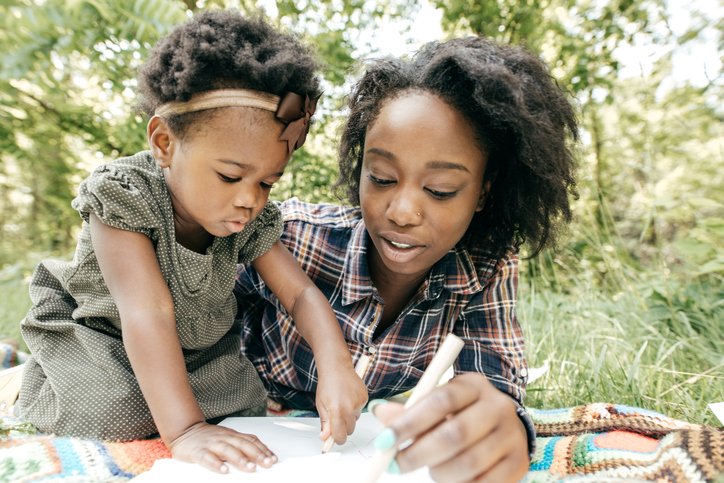When it comes to reaching developmental milestones, smiling, laughing, crawling, and walking are viewed as the most exciting, but while achieving these big milestones babies are also hard at work on things like fine motor skills.
While crawling and walking require a ton of energy and are often rewarded with smiles, hugs, and clapping from adoring adults, developing fine motor skills requires far less enthusiasm and more patience, and it doesn’t quite garner the same amount of fanfare.
The first year of life lays an important foundation for developing fine motor skills, but these skills will continue to grow during the toddler, preschool, and early childhood years.
I have hands!
It takes about two months for babies to even realize they have hands. When you catch your baby staring at his or her hands in amazement, you know your baby has made an important discovery: these are attached and I can make them move!
Between two and four months of age, babies will begin swiping at toys and interesting objects. They might make contact at times, but they can’t yet grasp the object yet. At about six months, accuracy will improve and your baby will grasp objects with a tight grip. This is also the age where your baby will start doing things, like banging and shaking, with toys.
Manipulating objects.
Between eight and twelve months, babies do a lot of work on their fine motor skills. During this time your baby will develop a pincer grasp – the ability to pick up smaller objects using his or her thumb and forefinger. This is also the time when your baby will work on honing finesse – the ability to grade their movements. Your baby will learn to twist an object in the right direction before trying to get it in his or her mouth, for example, or grab a piece of food with a light touch to avoid crushing it.
Picking up or grabbing an object is only half the battle, and infants also work on letting go of objects during this time. It might seem hard to believe but learning to loosen a grip takes quite a bit of practice, as well.
You can help your 8 to 12-month-old baby work on fine motor skills by doing the following:
• Spread Cheerios out on the high chair tray and let your baby try to grab them
• Teach your baby to hold a spoon
• Provide small containers for filling and emptying
• Provide objects for grasping, like blocks, toy rings, and board books
Crayon time!
Once your baby has mastered the pincer grasp, he or she is ready to hold a crayon and make some marks. First scribbles are likely to come in the form of large arcs, blobs, and unintentional wavy lines, but the act of early scribbling is both fun and calming.
By about 15 to 18 months, random scribbles will begin to emerge as expressive drawing. While you won’t necessarily see the “flower” on the page, you will likely see use of color to differentiate and more specific patterns.
Between 18 and 24 months, your baby’s scribbles will become more recognizable and take up more space on the page.
What not to worry about.
Not all babies and toddlers gravitate toward crayons and coloring. Sidewalk chalk is a fun alternative for making a mark, and rubber stamps help with grip and practicing controlled movements. You can also try non-toxic (and washable) markers, painting with brushes or sponges, and finger paints.
When to call the doctor:
It’s important to remember that all babies develop on their own timelines. Developmental milestones provide a handy guide, but not every baby meets a milestone at a certain time. If your baby can’t deliberately release an object by 12 months, still uses a fisted grasp to hold a crayon at 18 months, or hasn’t developed a pincer grasp by 18 months, mention it at your well child visit.
Be sure to give your baby plenty of time to develop these skills with lots of playtime and by introducing toys for grasping, crayons, and even play dough to help build muscle tone.
Photo via Getty








